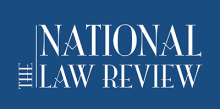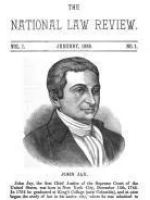Despite the attention paid to diversity and inclusion in the legal profession, there was a significant lack of information on Native American attorneys and their experiences. In order to address this lack of data, the National Native American Bar Association (NNABA) commissioned the first-ever study of Native American attorneys: The Pursuit of Inclusion. Immediate Past President of the NNABA, Mary Smith, says “The NNABA hopes that this research will be used to build a more robust pipeline of Native American attorneys and to work toward the full inclusion of Native Americans in the legal profession.” This stated purpose is a direct reflection of the goals of the NNABA, and the NNABA hopes this study will be used by diversity initiatives to inform efforts to recruit and retain Native American attorneys.
By asking over 500 American Indians, Alaskan Natives, and Native Hawaiians to complete a detailed survey and doing over 50 one on one phone interviews, this study encompasses over 20% of the Native American attorneys in the United States. The results indicate that a large number of attorneys who identify as Native American have been systematically excluded from full participation in the legal profession. The causes span a variety of issues, from inadequate recruitment efforts to an inability to retain attorneys in the profession.
Aside from failures of inclusion, one of the most sobering results of this research is that Native American attorneys share a feeling that their experiences do not matter. Mary Smith says, “One of the powerful findings of this study is that Native American attorneys often feel invisible and share an overarching perspective that their experiences are not valid or real.”
The pressures and challenges unique to Native American attorneys come from a variety of sources. Fundamentally, identifying and being recognized as Native American is a complex process requiring a variety of criteria. This is very different from the identification process of other racial and ethnic minorities, and complicates any study of progress or measurement of the group in terms of inclusion. Native American attorneys confront challenges on all sides and at many points in their legal career they are confronted with these challenges--from the decision to attend law school, to the occasional pressure from law firms to work in Indian Law Practice, and the pressure to return to practice within their tribe, Native American attorneys faced challenges unique to their ethnic group. These problems are compounded by the failure of diversity initiatives to understand and serve this population. These reported challenges were on top of the 40.65% of respondents who indicated experiencing demeaning comments based on their race, ethnicity and tribal affiliation and more than 33% reported instances of discrimination based on their race, ethnicity and tribal affiliation.
Tellingly, a perception of exclusion persisted even when Native American attorneys were working with other racial/ethnic minority attorneys, and groups that were focused on diversity. This led many Native American attorneys to conclude that their experience was not an important aspect of diversity because of their small numbers. These, and other findings in the report, led Mary Smith to conclude, “This research presents a stark portrait of an entire group of attorneys systematically excluded from the legal profession.”
To quote the Executive Summary, “This research is a snapshot of the present, but it does not have to be predictive.” To be sure, the study identifies some significant barriers to Native American attorney participation in the legal profession, but it also identifies ways to break down these barriers. It starts with creating more opportunities for Native American students to learn about the law, starting younger--in elementary school; for example, to making sure their are adequate support systems in place for young Native American attorneys to make the transition from law school into the workplace. Diversity efforts should specifically include Native American lawyers and their stories, as well as financial aid outreach should pointedly include Native-American students. Additionally, Law school career centers should revisit and educate themselves on the motivations of Native American law students, in order to effectively support Native American students as those students research and choose career paths.
To learn more, access the study here: http://www.nativeamericanbar.org/native-american-attorney-study/.




 />i
/>i
